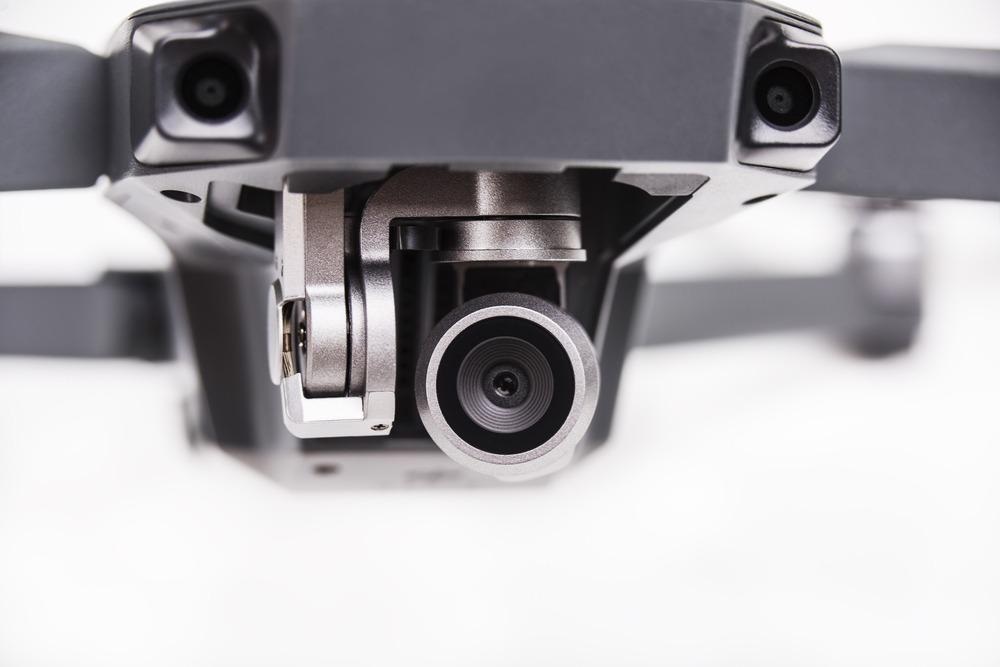
Image Credit: Victoria Shapiro/Shutterstock.com
Polished glass has always been the cornerstone of modern optics and imaging systems. Shaped precisely, it helps us focus light and produce sharp images. However, changing its focus requires physically tilting, sliding, or shifting the lens, often mechanically, which adds bulk to microscopes and telescopes. It is also hard to miniaturize the classical lenses and mirrors currently used.
Metalens technology could solve this problem by exploiting light and matter interactions at the nanometer scale to achieve unparalleled control of light's behavior.
Metalenses are flat surfaces etched with nanostructures that manipulate and focus light. They possess unique properties that cannot be achieved with conventional diffractive surfaces. Furthermore, they are thin, easy to make, and cost-effective.
Such metalenses could replace large lenses currently used in optical devices, permit miniature zoom lenses for drones, mobile phones, and night vision goggles, and enable new types of ultracompact devices for 3D sensing, augmented, and virtual reality.
MIT Metalenses
At MIT, engineers have created a metalens that focuses on objects at multiple depths without changing the lens’s physical position or shape. It is made from a transparent, phase-changing material that can reorganize its atomic structure, and therefore the way it reacts with light after being heated.
GTS is an amalgamation of germanium, antimony, and tellurium, and is often used in rewritable CDs and DVDs. The engineers tweaked this phase-changing material by adding selenium to create GSST, which changes from an amorphous tangled mass of atoms to an ordered crystalline structure when heated.
A metasurface was created by etching the GSST layer with tiny, precisely patterned microscopic structures that refract and reflect light in unique ways. When the material’s phase changes, so does the metasurface’s optical function.
At room temperature, light is focused on generating a sharp image of an object a certain distance away. When heated, the atomic structure changes and the metasurface responds to redirect light to focus on an object further away. Heating also changes the way infrared light travels through the material, causing a change in refractive power.
The engineers tailored this switching ability to direct and focus light at specific points depending on the phase, creating an active lens that can tune focus without the need for bulky, mechanical elements.
“In general, when one makes an optical device, it’s very challenging to tune its characteristics postfabrication,” explains Mikhail Shalaginov, a Postdoctoral Associate in the department of Materials Science & Engineering. “That’s why having this kind of platform is like a holy grail for optical engineers, that allows [the metalens] to switch focus efficiently and over a large range.”
“Our result shows that our ultrathin tunable lens, without moving parts, can achieve aberration-free imaging of overlapping objects positioned at different depths, rivaling traditional, bulky optical systems,” says Tian Gu, a research scientist in MIT’s Materials Research Laboratory.
This may enable more agile optical devices such as miniature heat scopes for drones, ultracompact thermal cameras for phones, and low-profile night vision goggles. The metalens could incorporate integrated microheaters to heat the material with short, millisecond pulses quickly. Researchers could also tune to other material’s intermediate states by changing heating conditions, enabling continuous focal tuning.
Harvard Research
Harvard researchers have also been developing metalenses. Their technology uses millions of tiny microscopically thin and transparent quartz pillars to diffract the flow of light just like a glass lens, but without the irregularities that naturally limit the glass. Their technology could disrupt digital imaging and enable new types of ultracompact devices for 3D sensing and AR/VR.
“The metalens platform has the potential to drive a revolution in imaging and sensing, from the ubiquitous cameras in cell phones, cars, and self-driving vehicles to AR/VR, and in the future to widespread use in drones and CubeSats."
Federico Capasso, Robert L. Wallace Professor of Applied Physics & Vinton Hayes Senior Research Fellow in Electrical Engineering, Harvard
Boston-based Metalenz Inc has been granted exclusive, worldwide license of this technology to advance the engineering of metalenses toward extensive fabrication for consumer, healthcare, and automotive applications, using semiconductor chip manufacturing.
Harvard researchers have collaborated with Case Western Reserve University to make metalenses reconfigurable. By controlling nanoscale forces to permeate liquid crystals between microscopic pillars, researchers could shape and diffract the light in entirely new ways. These liquid crystals can be influenced thermally, electrically, magnetically, or optically, allowing flexible or reconfigurable lenses.
References and Further Reading
Chu, J. (2021) New “metalens” shifts focus without tilting or moving, MIT News [Online] Available at: https://news.mit.edu/2021/metalens-shifts-focus-0222 (Accessed 9 March 2021).
Engleberg, J. & Levy, U. (2020) The advantages of metalenses over diffractive lenses, Nature Communications [Online] Available at: https://www.nature.com/articles/s41467-020-15972-9 (Accessed 9 March 2021).
Harvard Office of Technology and Development (2021) Harvard’s metalens technology enters commercial development, Harvard Office of Technology and Development [Online] https://otd.harvard.edu/news/harvards-metalens-technology-enters-commercial-development/ (Accessed 9 March 2021).
Case Western Reserve University (2020) A new lens on the world, the daily [Online] https://thedaily.case.edu/a-new-lens-on-the-world/ (Accessed 9 March 2021).
Photonics Media (2018) Single Metalens Focuses all Colors of the Spectrum in one Point, Photonics.com [Online] Available at: https://www.photonics.com/Articles/Single_Metalens_Focuses_all_Colors_of_the/a63034 (Accessed 9 March 2021).
Disclaimer: The views expressed here are those of the author expressed in their private capacity and do not necessarily represent the views of AZoM.com Limited T/A AZoNetwork the owner and operator of this website. This disclaimer forms part of the Terms and conditions of use of this website.